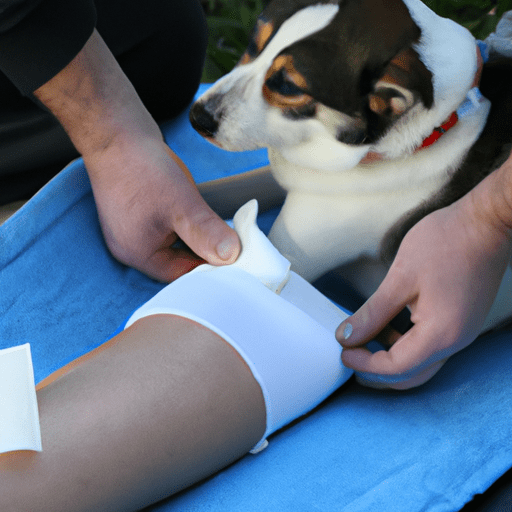Caring for a canine companion requires you to be ready for anything, including injuries. At times, it’s a twisted paw, a cut, or a scrape that your furry friend might experience while exploring the great outdoors. In such circumstances, you, as a caregiver, need to be well-equipped with knowledge on how to bandage a dog’s leg.
Preparing for the Procedure
First, let’s prepare ourselves for the task at hand. It’s not just about the bandage. It’s about the approach, the tools, and the patience it demands.
-
Gather Necessary Materials: You’ll need a clean bandage, adhesive tape, non-stick pads, and a pair of scissors. An Elizabethan collar might come handy to prevent your pet from chewing the bandage.
-
Keep Your Calm: Your dog can sense your emotions. If you’re anxious, your pet will be too. Therefore, it’s crucial to stay calm and composed.
Analyzing the Injury
Let’s take a moment to understand the injury. Remember, not all wounds need bandaging. If the cut is minor, a simple cleanse with water and pet-safe antiseptic might suffice. However, for severe injuries, it’s best to consult a vet immediately.
-
Location and Severity: The location of the wound and its severity will determine the bandaging technique.
-
Bleeding: If the wound is bleeding, apply pressure using a clean cloth until the bleeding stops.
-
Foreign Objects: Check for any foreign objects lodged in the wound. If found, do not attempt to remove it yourself. Seek immediate veterinary help.
Bandaging the Wound
Once you’re ready and have assessed the injury, it’s time to wrap the wound.
-
Cleanse the Wound: Use a pet-safe antiseptic to clean the wound. Do not use human-grade products as they might be too harsh for your pet’s skin.
-
Apply Non-Stick Pad: Place a non-stick pad over the wound to absorb any oozing and to protect it from direct contact with the bandage.
-
Wrap the Bandage: Start wrapping the bandage from a lower point to a higher point, ensuring it’s tight but not overly so to cut off blood circulation.
-
Secure with Adhesive Tape: Once done, secure the bandage with adhesive tape. Do not apply adhesive directly to the fur.
Post-Bandaging Care
After the bandage is in place, your work is far from over. Keep an eye on your pet and the bandage.
-
Monitor the Bandage: Check the bandage regularly for signs of infection, such as redness, swelling, or discharge.
-
Change the Bandage: Replace the bandage every couple of days or as advised by your vet.
-
Prevent Chewing: If your dog attempts to chew the bandage, use an Elizabethan collar.
Frequently Asked Questions (FAQs)
Q: Can I use any bandage available at home?
A: It’s best to use a bandage specifically designed for pets, as human-grade bandages might be too harsh on your pet’s skin.
Q: How tight should the bandage be?
A: The bandage should be snug, not tight. If it’s too tight, it might cut off blood circulation.
Q: What if my dog chews the bandage off?
A: Use an Elizabethan collar to prevent your dog from reaching the bandage.
Q: When should I consult a vet?
A: If the wound is severe, if there’s a foreign object lodged in it, or if signs of infection appear, consult a vet immediately.
Remember, as a caregiver, your calm and prompt response can make a world of difference to your pet’s well-being. Don’t panic, and handle the situation with patience and love.



